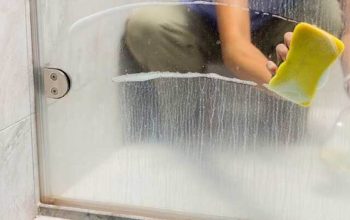Your clothes dryer, while a modern convenience, is often a silent energy guzzler in your home. The good news is that with a few simple adjustments and smart practices, you can significantly reduce its energy consumption, saving money on your utility bills and minimizing your environmental impact.
Understanding the Problem: Dryer Energy Consumption
Electric dryers are typically one of the most energy-intensive appliances in a household, second only to refrigerators and air conditioners. A standard electric dryer can use anywhere from 1,800 to 5,000 watts of electricity per cycle, depending on its age, size, and features. This translates to a significant portion of your overall energy bill.
The Ripple Effect: Environmental Impact
Besides the financial burden, excessive dryer use also contributes to greenhouse gas emissions and climate change. The electricity used to power your dryer likely comes from power plants that burn fossil fuels, releasing harmful pollutants into the atmosphere. By reducing your dryer’s energy consumption, you’re not just saving money; you’re also helping to protect the planet. If you’re dealing with issues like a Whirlpool dryer with no heat problem, check out https://www.bulksgo.com/home-improvement/whirlpool-dryer-not-heating-a-complete-troubleshooting-guide/.
Strategies for Energy-Efficient Drying
- Maximize Airflow:
-
- Clean the lint trap: This should be done after every load. A clogged lint trap restricts airflow, forcing the dryer to work harder and longer to dry your clothes.
- Check the dryer vent: Ensure it’s clear of debris and kinks. A blocked vent can significantly reduce drying efficiency and even pose a fire hazard.
- Straighten the vent hose: Avoid sharp bends in the hose as they can impede airflow.
- Optimize Load Size:
-
- Dry full loads: Avoid overfilling the dryer, as this can restrict airflow and prolong drying time.
- Combine loads: If you have multiple loads to dry, do them consecutively. This takes advantage of the residual heat in the dryer, reducing the energy needed to warm it up for each cycle.
- Utilize Dryer Settings:
-
- Moisture sensor: If your dryer has one, use it. This setting automatically stops the cycle when clothes are dry, preventing over-drying and saving energy.
- Air dry cycle: For delicate items or those that are almost dry, this cycle uses no heat, significantly reducing energy consumption.
- Energy-saving mode: Some dryers have this mode, which may lower the drying temperature or adjust the cycle to be more efficient.
- Pre-Drying Techniques:
-
- High-speed spin cycle: Use the highest spin speed on your washing machine to remove as much water as possible before drying.
- Shake out clothes: This helps to untangle them and loosen up fabrics, allowing for faster drying.
- Line drying: Whenever possible, especially on sunny days, hang clothes to dry naturally. This is the most energy-efficient method and can extend the life of your clothes.
- Maintain Your Dryer:
-
- Clean the dryer drum: Wipe down the inside of the drum regularly to remove any residue that could affect drying efficiency.
- Replace worn-out parts: If you notice any issues with the dryer’s performance, have it checked and repaired by a professional.
- Consider upgrading: If your dryer is old and inefficient, investing in a new, energy-efficient model can save you money in the long run.
Related: How to Maintain a Washing Machine
Additional Tips:
- Use dryer balls: These reusable balls help to separate clothes, increase airflow, and reduce drying time.
- Avoid drying heavy items with light ones: This can lead to over-drying of lighter fabrics and waste energy.
- Clean the dryer filter regularly: This helps to maintain optimal airflow and prevent fire hazards.
- Dry clothes during off-peak hours: If your utility company offers time-of-use rates, you can save money by drying clothes when electricity is cheaper.
The Bottom Line
Making your dryer more energy efficient is a win-win situation. You’ll save money on your energy bills, reduce your carbon footprint, and potentially extend the life of your clothes. By adopting these simple strategies, you can make a significant impact on both your wallet and the environment.








